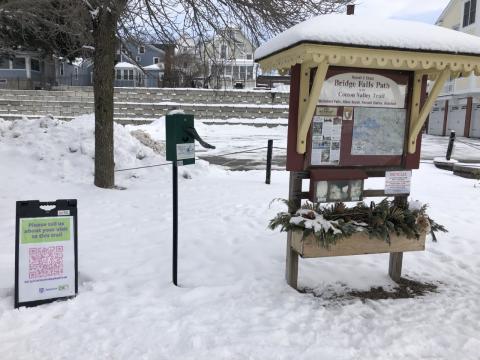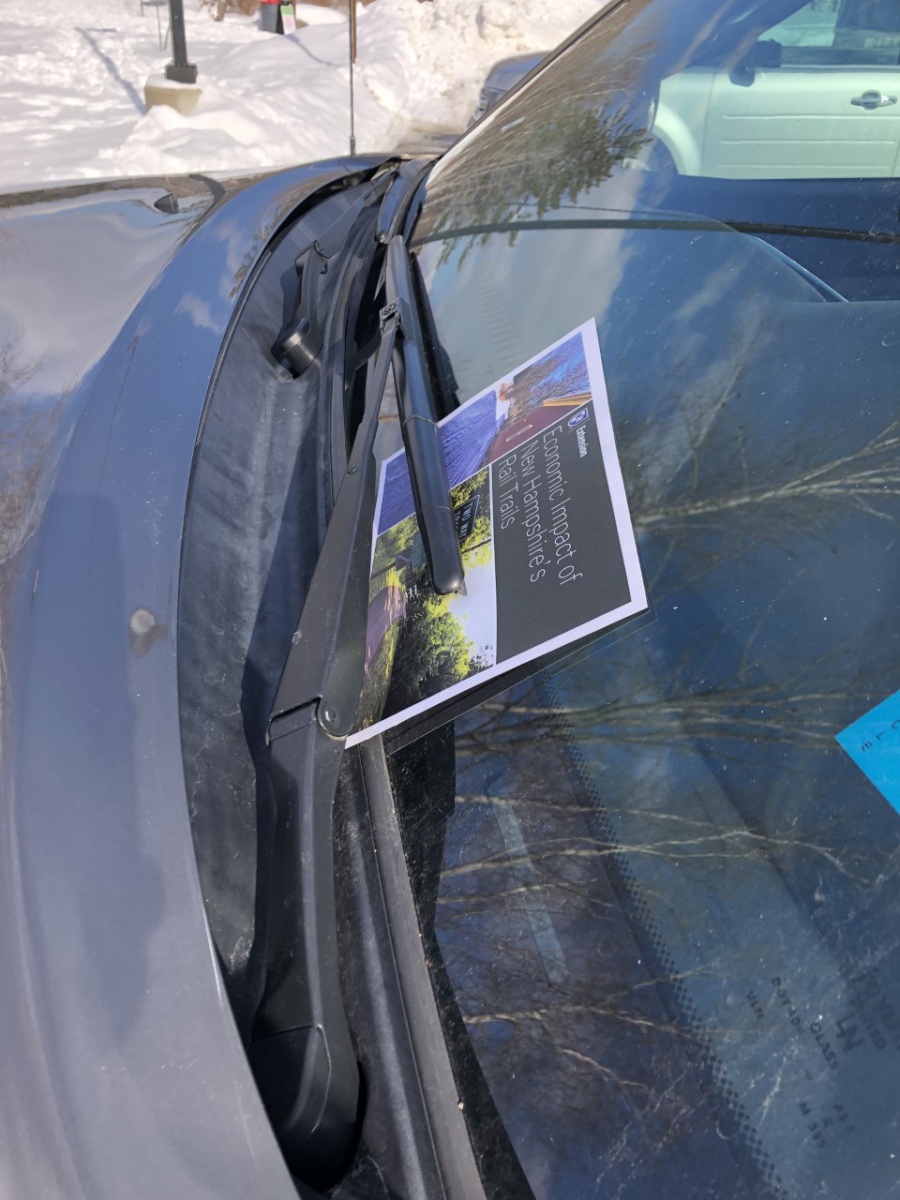Innovating Economic Analysis Research Methods during COVID-19

Have you seen signs with QR codes on your favorite NH rail trail? Our team is currently collecting data through surveying trail users to estimate the economic impacts of New Hampshire’s state  owned rail trails. Like much of our other work, continuing this economic analysis research required adaptation and innovation.
owned rail trails. Like much of our other work, continuing this economic analysis research required adaptation and innovation.
Toward the end of February 2020, our team began this new applied research project. Our work was exciting because, unlike many economic impact studies that rely on secondary data, we were implementing a detailed plan to collect our own data, in person, through intercept surveys at trailheads. Those who have participated in this type of survey (maybe at the mall or on a sidewalk) may remember that it requires fairly close contact among strangers to either fill out a paper survey on a clipboard or online via iPad or mobile device. You may also recall that this was right before COVID-19 restrictions were put in place.
 Suffice it to say, we had to stop our in-person surveys for some time. This winter, we began a safe, modified intercept survey approach that allows for data collection and social distancing. Surveyors—which include the authors and two student interns with backgrounds in planning and environmental economics in UNH’s Natural Resources & Environment Department-- bring signage with QR codes to the rail trailheads and encourage folks from afar to scan the QR code, fill out a paper survey or take a postcard to complete the survey later. We are all part of the UNH COVID testing system, wear our masks, clean our hands and keep our distance in a friendly manner.
Suffice it to say, we had to stop our in-person surveys for some time. This winter, we began a safe, modified intercept survey approach that allows for data collection and social distancing. Surveyors—which include the authors and two student interns with backgrounds in planning and environmental economics in UNH’s Natural Resources & Environment Department-- bring signage with QR codes to the rail trailheads and encourage folks from afar to scan the QR code, fill out a paper survey or take a postcard to complete the survey later. We are all part of the UNH COVID testing system, wear our masks, clean our hands and keep our distance in a friendly manner.
What We Learned
There have been challenges and successes with the modified intercept survey approach. Here are a few:
- Our goal was to support safety and social distancing without compromising survey responses. We have found that it is necessary to have a surveyor encouraging trail users to scan the QR code to take the survey. Even still, some trail users may not want to stop on the trail or are not interested in participating. Having a surveyor present versus just a sign on the trail has been important for survey response rate.
- Weather has provided opportunities and challenges to this research. In comparison to last winter’s lack of snow, this winter we had more snow and trail users cross country skiing, snowshoeing and snowmobiling on the trails. Very cold and windy days have been a challenge for data collection. We find there are fewer trail users on these days and concerns with surveyors staying outside for hours in the cold.
- Surveyors have been flexible and adaptable. Sometimes we will visit a trail and don’t see any trail users for an hour or two. We have experimented with leaving postcards with more information on car windshields so people we don’t see have the opportunity to complete the survey. Because there are often multiple ways to enter and exit a rail trail, it is helpful to visit different trailheads and walk the trail to engage with other trail users.
- It has been a positive experience to be back out on the trails and talking with trail users. We find many trail users are practicing social distancing, interested in our research and willing to look at the survey.
We look forward to warmer spring days and more data collection on NH’s state owned rail trails this spring, summer and fall. If you see us on the trail, please participate in our survey!

